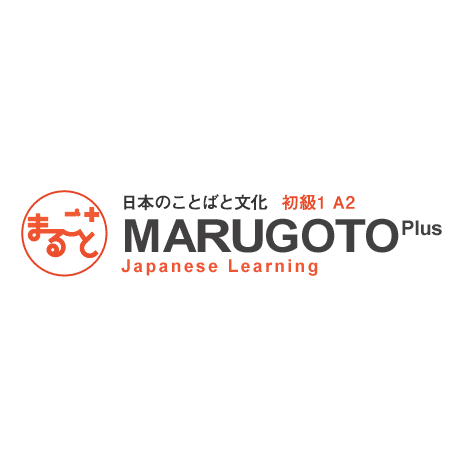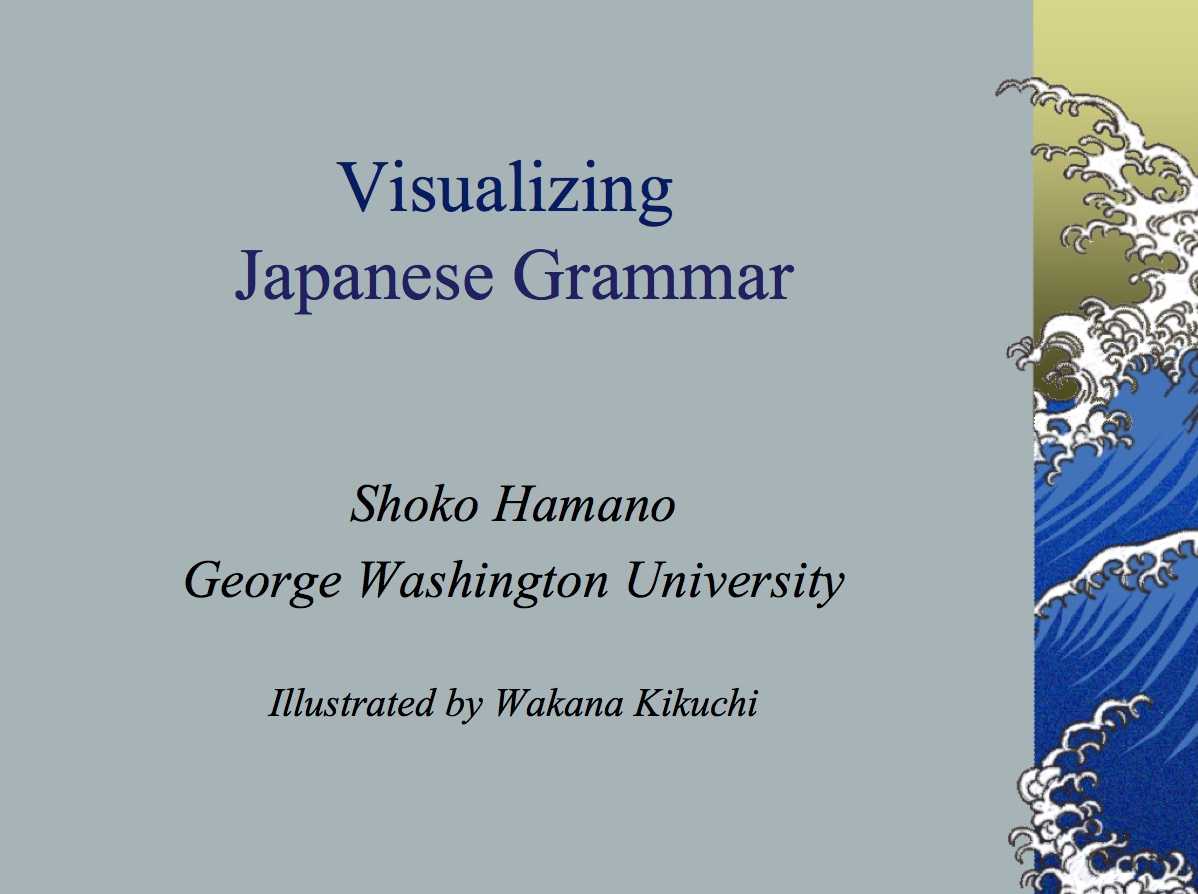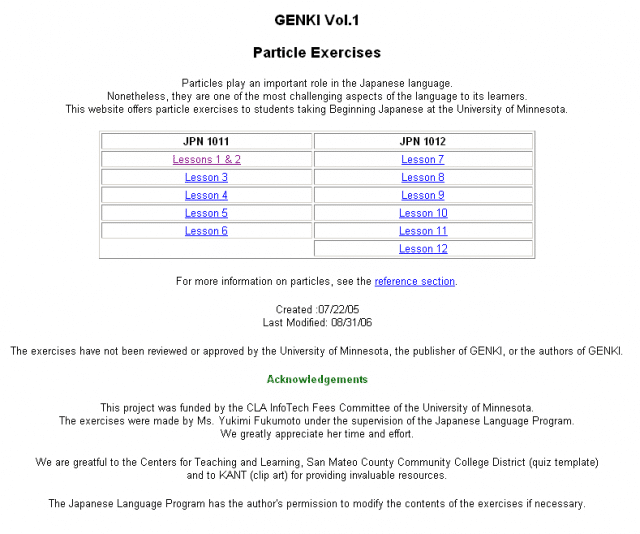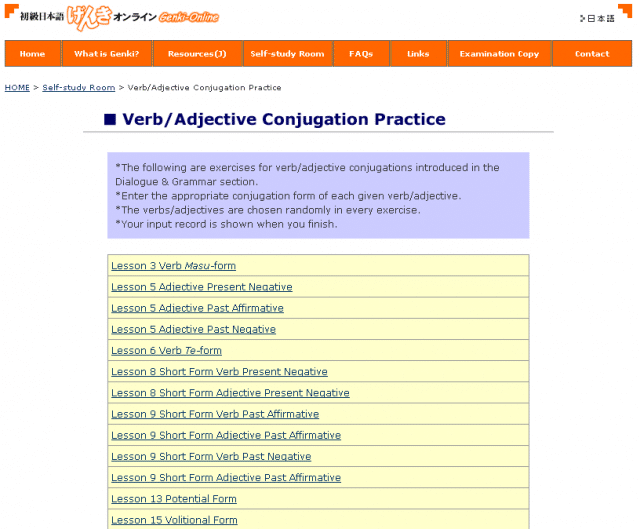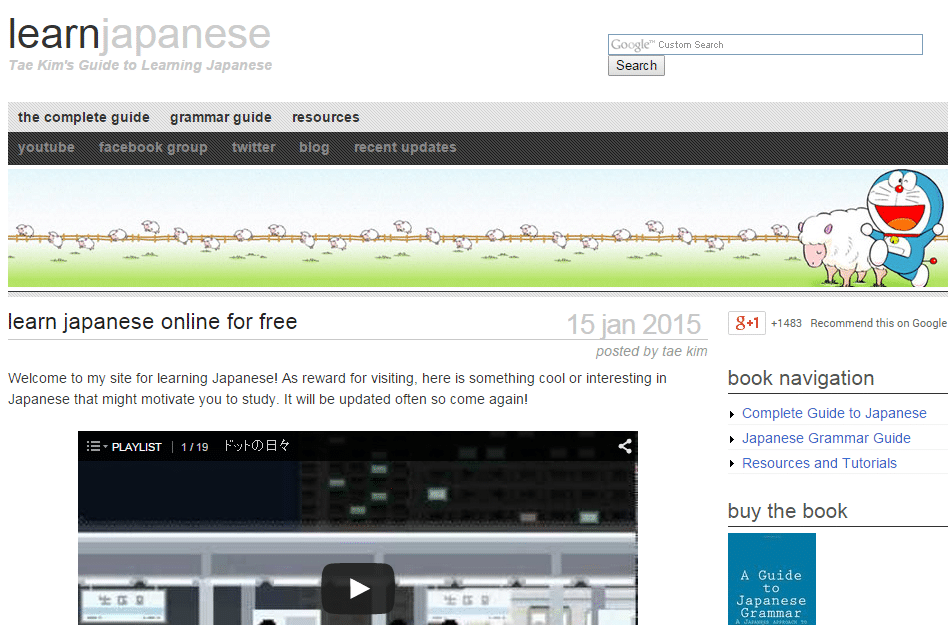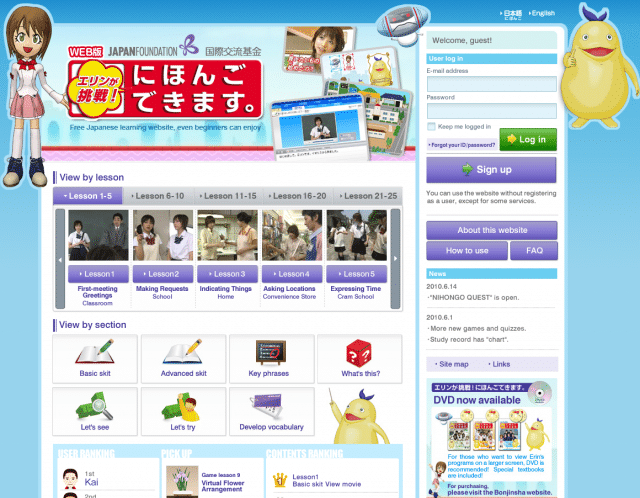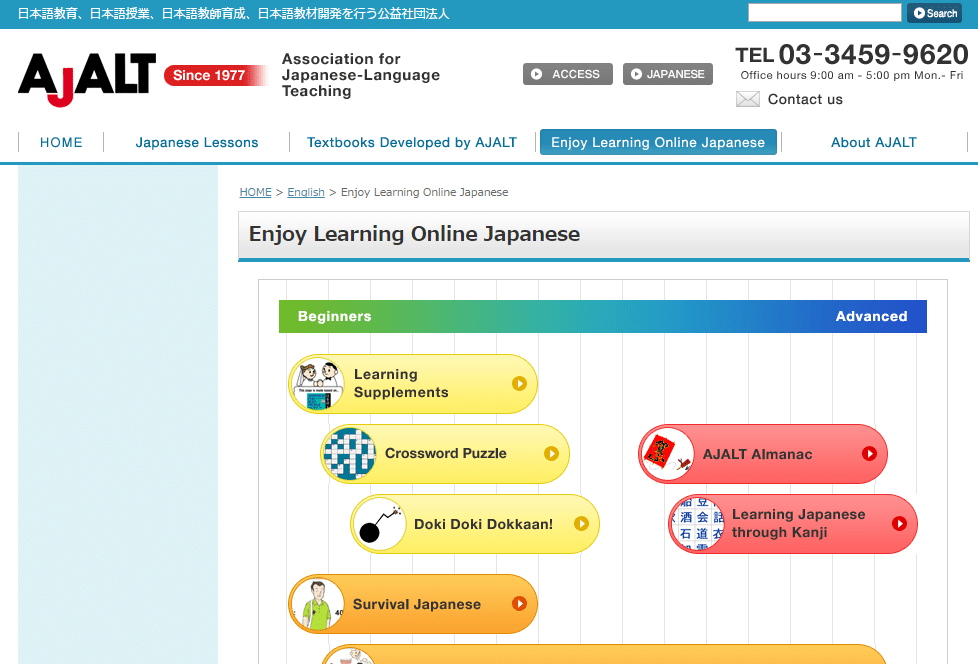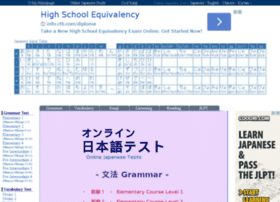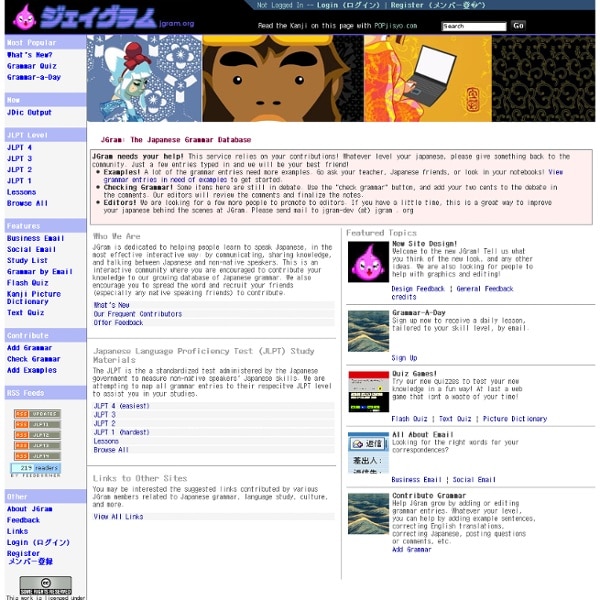
10 Must-visit Websites for Japanese Grammar Exercises
When it comes to language learning, grammar might seem like a kind of super weapon.
Well, let me tell you a secret: It actually is.
I have gathered 10 great resources to help you learn grammar online using Japanese grammar exercises, from the comfort of your own home.
Contents
- 1. Maruguto Plus
- 2. Visualizing Japanese Grammar
- 3. Genki Vol. 1 Particle Exercises
- 4. Genki-Online Verb/Adjective Conjugation Practice
- 5. Tae Kim’s Guide to Learning Japanese
- 6. Erin’s Challenge!
- 7. AJALT’s Enjoy Learning Online Japanese
- 8. U-biq: Online Japanese Tests
- 9. JGram: The Japanese Grammar Database
- 10. FluentU
Download: This blog post is available as a convenient and portable PDF that you can take anywhere. Click here to get a copy. (Download)
1. Maruguto Plus
Best for: Beginners
Marugoto Plus is a site compatible with the contents of “MARUGOTO: Japanese Language and Culture,” the official course book of the Japan Foundation. Having the textbook is not a prerequisite in order to use the site, and all of the site’s content is super useful.
What’s interesting about Marugoto is that its culture references are not strictly Japanese; you can learn about other cultures as well! Marugoto Plus is great for studying the grammar for A1-A2 levels of the JF Standard through an array of conversations, videos and pictures. The A1 level is available in Japanese, English and Spanish while the A2 level is available in Japanese and English.
2. Visualizing Japanese Grammar
Best for: Beginners
Visualizing Japanese Grammar is one of my favorite grammar sites for beginners. It contains 66 flash animations, each presenting a different sentence structure. Every unit consists of a flash animation, complete with explanations and examples, a vocabulary list and a final quiz to test your understanding of the lesson.
The explanations are presented in both Japanese and English, and at the end of each lesson you will see a list of other related units. There is also a side menu of all available units, so you can choose the grammar structure you want to learn in particular.
The site, on top of the video lessons, offers 12 PowerPoint presentations with all the key elementary grammar points. It is a great place to start if you’re new to learning Japanese grammar, and it’ll make your life easier when you turn the page from the elementary to the intermediate level.
3. Genki Vol. 1 Particle Exercises
Best for: Beginners
Genki Vol. 1 Particle Exercises is exactly what it says it is: a website in which you can study and practice particles covered in the “Genki” textbook. It contains multiple choice quizzes, and if you happen to not know the answers, there are explanations provided.
“Genki” is a great resource for learning elementary Japanese, and this site is a great companion to the actual textbook.
4. Genki-Online Verb/Adjective Conjugation Practice
Best for: Intermediate
Here’s another great site that goes alongside my beloved “Genki” textbook series. In Genki-Online Verb/Adjective Conjugation Practice you can easily check all the rules for conjugating Japanese verbs and adjectives. You know all those funny endings you encounter in Japanese words? They all do have a special meaning.
The exercises allow you to turn your keyboard to Japanese input and get a real feel for the way Japanese is written. The site follows the grammar sections of the textbook and contains various exercises—from choosing the correct masu-form (-ます) to those difficult past tense adjective conjugations.
At the end of each practice session there is a very useful summary to review your answers and find your weak points. It’s a great site for brushing up those important basic grammar points.
5. Tae Kim’s Guide to Learning Japanese
Best for: Beginners – Intermediate
Tae Kim’s Guide to Learning Japanese site is one of my all-time favorites. It contains the key points of Japanese grammar with clear explanations and great example sentences. Tae Kim offers his grammar guide in 11 different languages, and his site is pretty easy to navigate.
You can also find both a forum and a blog on his site. In the forum there’s a very active community ready to answer all your questions about the Japanese language, and the blog is full of interesting articles on Japanese culture. Overall, a must-visit site.
6. Erin’s Challenge!
Best for: Intermediate
Erin’s Challenge is a great interactive site for practicing your Japanese grammar. It’s the online version of the popular DVD learning material “エリンが挑戦!にほんごできます。(Erin’s Challenge! I can speak Japanese).”
It supports more than five languages including English, Japanese, Spanish, Korean and French. It has 25 lessons with videos of real-life situations in which you can hear a near-natural form of the language.
Each lesson is divided into seven parts:
- The Basic Skit contains a situational video, which has the ability to turn into a manga!
- The Advanced Skit contains language as you would find it in a normal conversation between Japanese people.
- You can study the lesson’s key expressions in Key Phrases.
- In What Is This? you answer questions relating to the topic of the lesson.
- Let’s See is a section where you have to answer questions based on pictures relating to Japanese culture.
- The Let’s Try part lets you try out Japanese-related games associated with each lesson.
- And finally, in Develop Vocabulary you can practice the words related to each lesson’s situation or topic with the help of pictures.
The site also offers a mini-game where you have to find your way through a small Japanese town. All the dialogues are solely in Japanese, making the game a great practice on reading and general understanding.
7. AJALT’s Enjoy Learning Online Japanese
Best for: All Levels
The Association for Japanese Language Teaching created a website, Enjoy Learning Online Japanese, in which you can study anything from elementary grammar to some pretty advanced reading practice.
There are eight distinct sections, which include survival Japanese and daily conversations, language games (like crossword puzzles), and reading practices accompanied by texts on the history and origins of kanji.
8. U-biq: Online Japanese Tests
Best for: All Levels
U-biq’s Online Japanese Tests site is a collection of quizzes on Japanese grammar, vocabulary, kanji, listening and reading. It focuses on the things you need to know for the JLPT (Japanese Language Proficiency Test), and it also supports Chinese and Korean.
The grammar quiz format might seem a little familiar to those of you using the “Minna no Nihongo” textbooks, and all the answer explanations are in Japanese. This is a very complete and comprehensive quiz site that is sure to meet all your online testing needs. It is part of the U-biq site, which includes tons of information and tests for both students and teachers.
9. JGram: The Japanese Grammar Database
Best for: All Levels
JGram: The Japanese Grammar Database is a site run by its community and contributing members. As an open source grammar, you can register and write your own explanations and examples. It has a very extensive list of the most important grammar points, with explanations and example sentences.
The site covers all levels, from elementary to advanced grammar. You can practice each of the lessons with quizzes and flashcards. It has a “grammar-a-day” mailing list, which is similar to the popular word-a-day concept. By joining, you’ll receive a grammar explanation sent to you by email each day.
Don’t forget to check out the games as well. GramaGame is a great practice in sentence structure!
10. FluentU
Best for: All levels
FluentU doesn’t exclusively teach grammar, but it’s an excellent way to learn grammar concepts in action.
FluentU is a language learning website and app that uses authentic videos to teach Japanese. Each clip is equipped with expert-vetted subtitles that are interactive—with one click, you can see the meaning and example sentences of any unknown word and add it to a custom flashcard deck. If you’re learning at a verb, you’ll see which form it is conjugated in. It also features personalized quizzes to help you understand everything you are learning.
The more native content you watch, the more familiar you will become with common grammar concepts found in real Japanese.
So, there you have it. These websites are sure to fill all your grammar needs, whether you’re a beginner or an advanced learner.
Grammar is really important when it comes to successfully translating your thoughts to speech. There is a whole unconscious process in the works, from thinking what you want to say in your native language, finding the right words in Japanese and then trying to make a comprehensible sentence out of them.
So don’t just attempt, learn how to do it properly—with grammar. What are you waiting for? Go out there, check out these sites and find your favorite today!
Download: This blog post is available as a convenient and portable PDF that you can take anywhere. Click here to get a copy. (Download)
